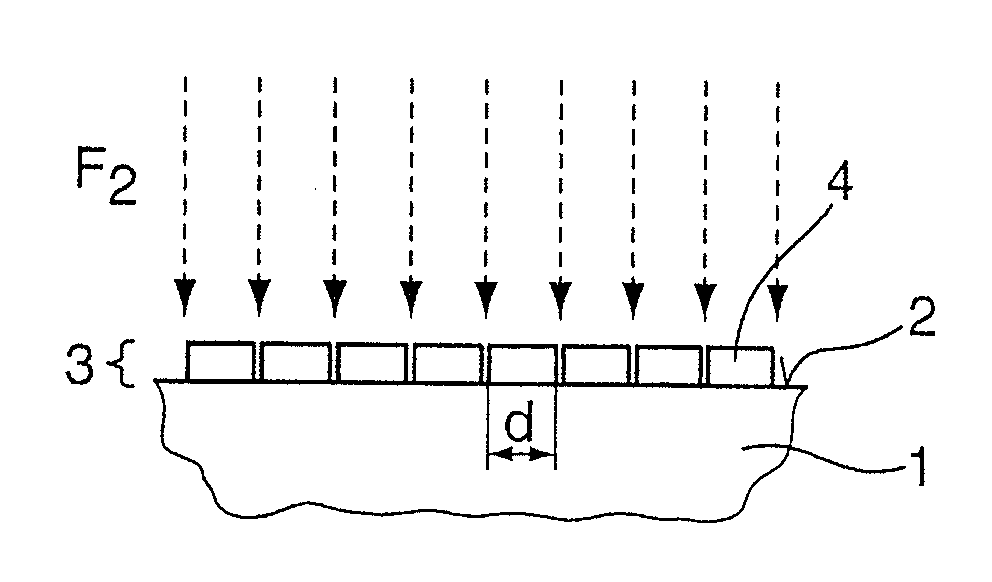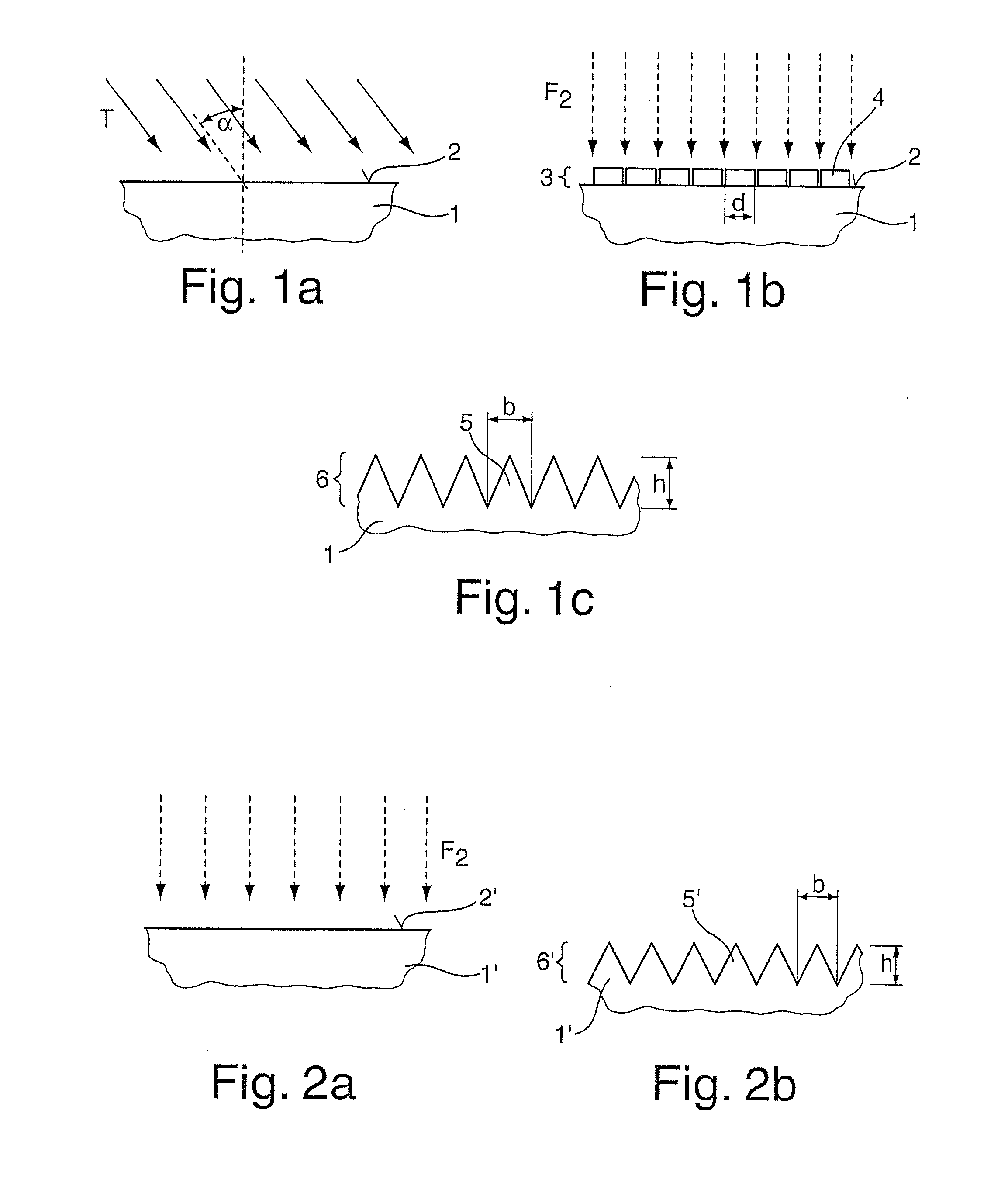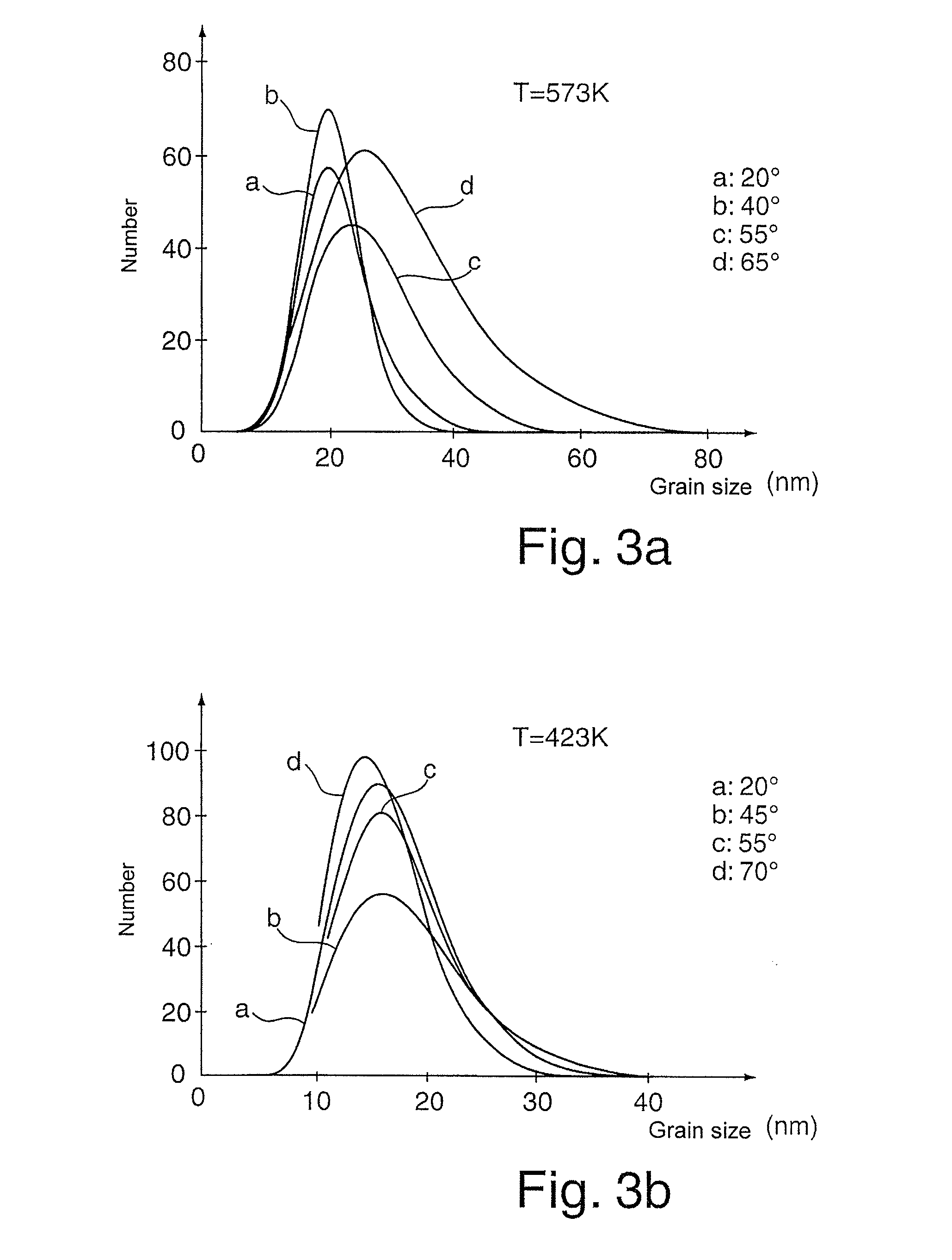Methods for producing an antireflection surface on an optical element, optical element and associated optical arrangement
a technology of anti-reflection surface and optical element, which is applied in the direction of printing, instruments, lighting and heating apparatus, etc., can solve the problems of remaining metal particles being easily diffused out and precipitated at undesirable locations, and achieve good reflection reduction effect, and good reflection reduction
- Summary
- Abstract
- Description
- Claims
- Application Information
AI Technical Summary
Benefits of technology
Problems solved by technology
Method used
Image
Examples
Embodiment Construction
[0033]FIGS. 1a-c show several method-related steps for producing an antireflection surface on an optical element 1 made of fused silica (SiO2), of which element 1 in each case only a partial region is shown in a sectional view in FIGS. 1a-c. In the present case the optical element 1 is a terminating plate for a projection lens (not shown) of a projection exposure apparatus for microlithography. The projection lens and thus also the optical element 1 are operated at a useful-light wavelength λ, of 193 nm.
[0034]In order to produce the antireflection surface, as shown in FIG. 1a, in a first step magnesium fluoride (MgF2) is vapor deposited onto the optical element 1 at a coating temperature T of 573 K, wherein the magnesium fluoride is applied at an angle of incidence of α=20° on a surface 2 of the optical element 1, which surface 2 is to be coated, at a suitable vapor deposition rate (arrows in FIG. 1a), where it forms a coating 3 as shown in FIG. 1b. The magnesium fluoride coating ha...
PUM
| Property | Measurement | Unit |
|---|---|---|
| Temperature | aaaaa | aaaaa |
| Temperature | aaaaa | aaaaa |
| Pressure | aaaaa | aaaaa |
Abstract
Description
Claims
Application Information
 Login to View More
Login to View More - R&D
- Intellectual Property
- Life Sciences
- Materials
- Tech Scout
- Unparalleled Data Quality
- Higher Quality Content
- 60% Fewer Hallucinations
Browse by: Latest US Patents, China's latest patents, Technical Efficacy Thesaurus, Application Domain, Technology Topic, Popular Technical Reports.
© 2025 PatSnap. All rights reserved.Legal|Privacy policy|Modern Slavery Act Transparency Statement|Sitemap|About US| Contact US: help@patsnap.com



